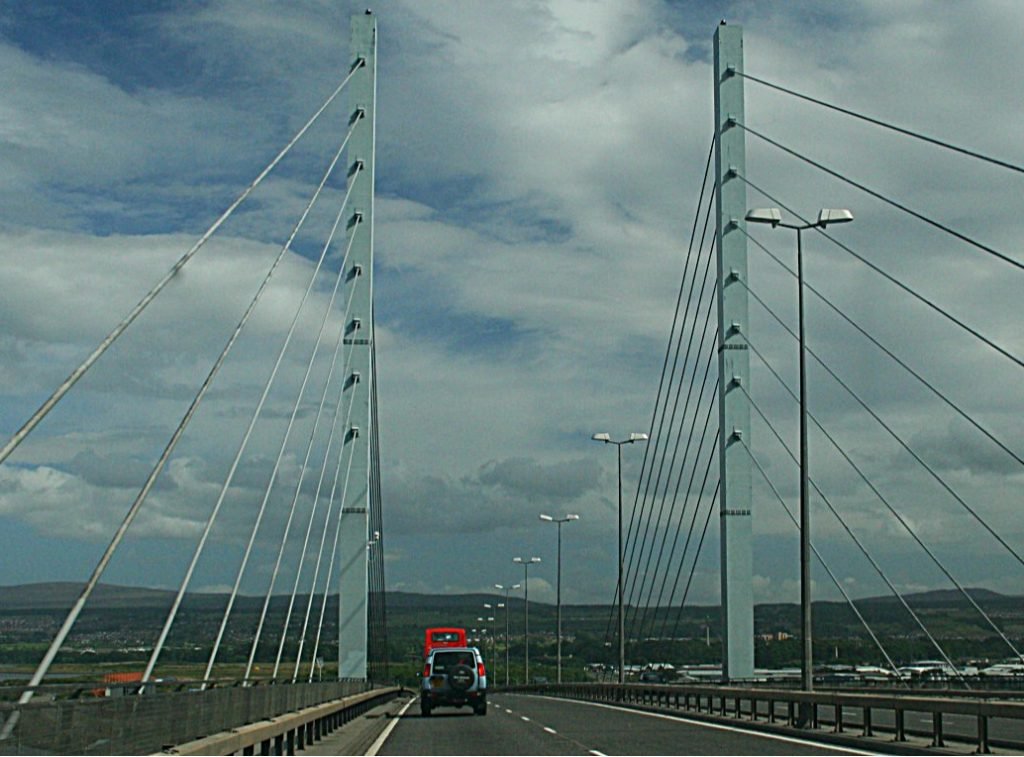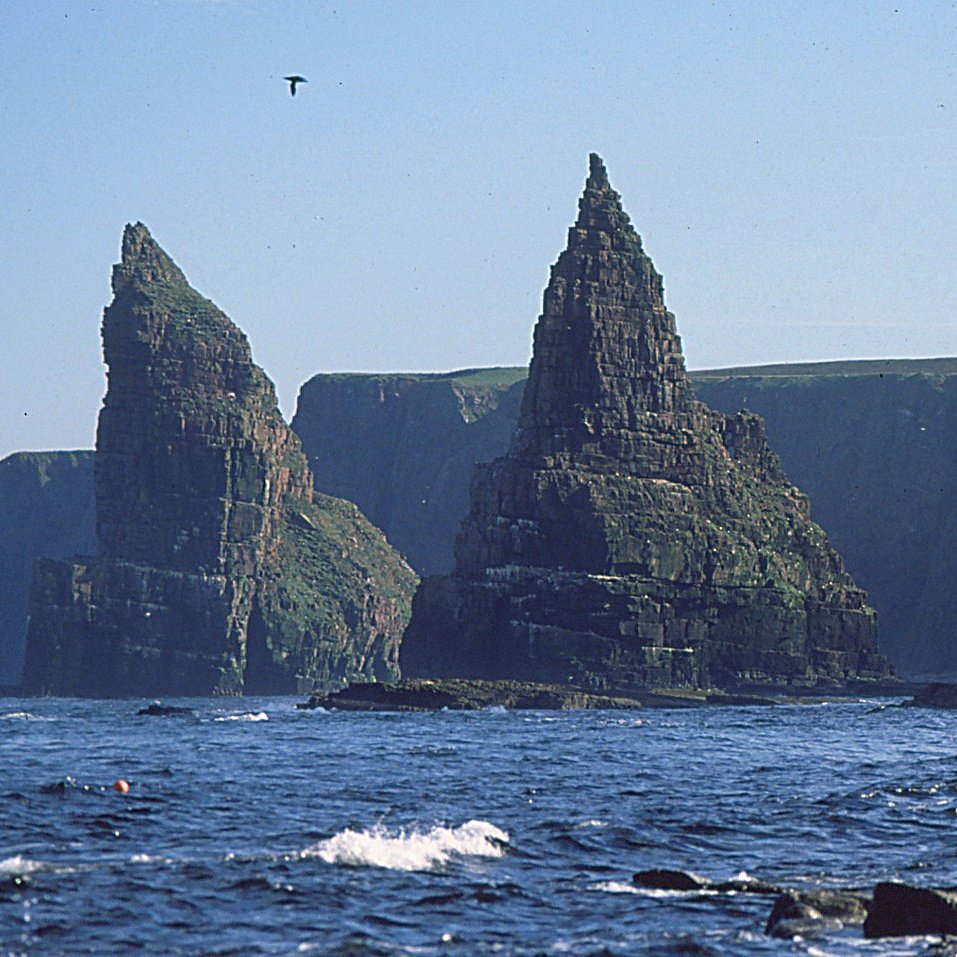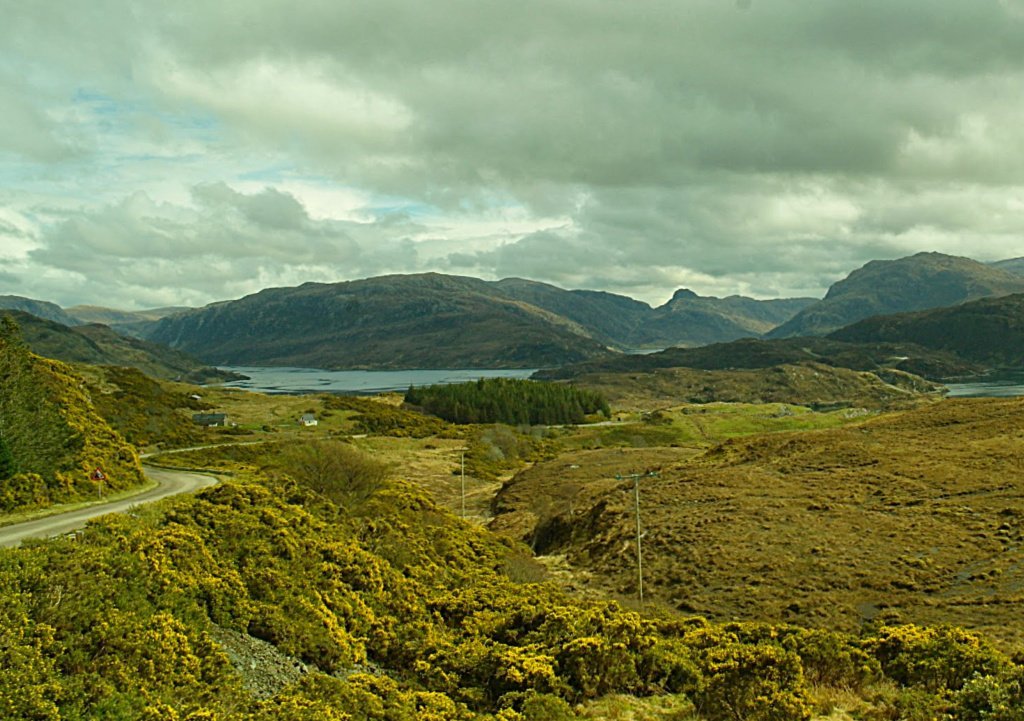The Vikings ruled the North from their Orkney power base. The most northerly part of Scotland was the south land – today’s Sutherland – to them. (OK, some of this tour round the northerly rim is now branded as ‘North Coast 500’ – but we won’t ask you for membership fees. This description is totally free!)
The Vikings knew the Northern Highlands and settled there, leaving place names as just one clue to their culture.
This route round the northern rim of Scotland should help you decide if you want to experience the particular ambience of the north. There is an Orkney option as well.
Wait, isn’t this the same as that North Coast 500 thing?
Hey, you noticed? The original writing here was done some time before some marketing folk decided to promote the far north of Scotland in this way.

And actually get folk to pay money for itineraries. Brilliant. Sheesh! (‘Shakes head in disbelief.’)
So, the rim road round the top has now been popularised to the extent that in places the infrastructure is now creaking a bit, according to press reports.
You could interpret that as a measure of its promotional success. (Much the same applies to Skye of course.)
By the way, ‘infrastructure is creaking a bit’ is a euphemism for ‘if I were you I’d not look too closely at what people leave behind in laybys’.
And you do hear tales of an increase in the kind of visitor who is more interested in the performance of their vehicle than in, say, the scenery or wildlife
The route has become a bit of a race-track, some say – after all, the route sponsor is Aston Martin. Hard to think of a more inappropriate sponsor, IMHO, given the characteristics of the roads.
This is not a company associated with walking boots, a light imprint on the environment or generally pootling about and enjoying scenery at a slow pace.
Mind you, all this assumes the petrol-heads can get past the convoys of camper-vans that now festoon the route. Not putting you off, am I?

Anyway, no matter what you read in North Coast 500 (aka The Toilet Tissue Trail – it’s the infrastructure, you know), I suggest the northlands are covered anticlockwise, as in up the east coast and down the west.
Heading up the Firth from Inverness
Right, as you’re heading north into the old lands of the Vikings, you probably have to make it to Inverness first. Should you stay there?
Check out the accommodation in Inverness – it gets pretty busy!
But remember this is no quaint Highland township. It isn’t a huge place but it’s servicing quite a large hinterland, so it’s an important and busy centre.
Long ago, a variety of Highland clans used to burn the place down regularly, so there are few historic buildings. In short, Inverness does shops and pubs, theatre and culture – and it does these very well – but it doesn’t do quaint. But there’s a lot of quaint to come on this route.

Whatever you decide, you could get yourself northbound via the Kessock Bridge (pictured here – though this pic is looking south, towards Culloden and the edge of Inverness).
Then it’s up the east side of Scotland by way of the firths and the coastal margin of Sutherland (which was the ‘south-land’ from the Vikings’ viewpoint).
‘Firth’ is also linguistically linked to ‘fjord’, as a kind of sea-inlet. There are a lot of place-name clues on this trip.
Visit (quaint?) old Scottish towns – the Vikings certainly did
There’s quite a cluster of old Scottish towns on the way – Dingwall (‘thing-vollr’ – place of assembly or Vikings parliament), as well as Tain, Dornoch and even Cromarty, should you take in the Black Isle, which isn’t an island.
Cromarty is picturesque, worth a detour, while Tain has the earnest and solemn ‘Tain through Time’ museum display telling the story of this former place of pilgrimage.

However, personally, I’d check out the pretty wee town of Dornoch – photogenic cathedral (pictured here) and nice beach, then re-join the main road at The Mound.
Miss out Dunrobin Castle
On the topic of what to see or not, personally, unless your name is Sutherland and you are doing genealogical research in Scotland, I’d give Dunrobin Castle a miss.
The largest house in the north of Scotland is a bit of a hotch-potch of furniture and odds-and-ends – and has been a hospital and a school in its time. Its heritage is also bound up with the Highland Clearances. (See below.)
There are more authentic castle experiences elsewhere in Scotland.
Dunrobin is north of Golspie (with a great fish and chip shop on the main street!) while the town name may be Norse meaning ‘Kol’s settlement or place’, by the way.

Discover more about the Highland Clearances
North again, on through Brora (another name the Vikings gave) and on to the village of Helmsdale (Timespan Museum here is an interesting visit with a wee cafe too) – then a real far northern ambience begins to develop.
There is a Highland Clearance village site at Badbea, between the main road (signposted) and the steep cliffs, where local folk were forced to settle after the Straths of Langwell, Ousdale and Berriedale were cleared. They later all emigrated.
The Sutherland Clearances were originally carried out in the name of George Granville Leveson-Gower, one of the Dukes of Sutherland, (probably 2nd but I really don’t care). He was sometimes described as the richest man in England in the 19th century.
He married Elizabeth Sutherland, 19th Countess of Sutherland, who just happened to have inherited most of the county of Sutherland. The combination of money and land changed this part of Scotland for ever.
If you want to read the definitive account of the ethnic cleansing carried out as ‘improvement’ (where the Highlanders were referred to as savages or aborigines) then I can heartily recommend Dr James Hunter’s ‘Set Adrift Upon the World’.
The work is particularly good in bringing out the women’s role both in the defence of their homeland and in the new life they built in Canada.
Anyway, back on this tour description, among the Vikings hereabouts was once called Hjalmund living in the strath (or valley), so Hjalmund’s dal became Helmsdale.)
Later, the folk who stayed on in this rugged countryside inhabited dwellings of a type you can see at the Laidhay Croft Museum, signposted by the road north of Dunbeath (likewise an interesting wee place).

(Pictured here) Looking north to Orkney, across a stretch of bog cotton. Good views of the abandoned island of Stroma from the Gills Bay to South Ronaldsay ferry. It’s the dark island stretching left from the house in the picture.
Here are a couple of John o Groats options – hop across to Orkney just to sample it, for example.
Next take the road across the ‘Flow Country’ – the interlaced lochan and moorland to reach Thurso (Probably Norse, ‘Thor’s river’). This is an overnight stop (if you haven’t stopped sooner!)
Alternatively, continue on the coast road through Wick where you’ll find another interesting heritage museum, all about the herring fishery.
By now you’ll have cracked the place name code and worked out that Wick is ‘vik’ or Norse for bay, hence Vikings, obviously. I’ll stop this now, unless I spot an interesting place name. I’ve never even mentioned all the ‘-gills’ and the ‘-goes’ and the ‘-sters’ that populate the signposts in the far north.
The big skies of the Far North
More to the point, this triangle bounded by Wick-Thurso-Duncansby Head is full of character, big skies, sweeping horizons and romantic views north to Orkney on the horizon.
It’s a pity that John o’ Groats is an anti-climax. Although there has been some hotel redevelopment in the last few years with some snazzy Natural Retreat lodges.
It’s also the place where you can take your day trip to Orkney – a really excellent introduction to these green isles of the north.
(And please – a special note for awe-struck first-time travel bloggers – don’t ever call John o’ Groats the most northerly village in print because there’s a more northerly one nearby, whose non-native settlers are positively grumpy on this topic.)
But do park at the Duncansby Head lighthouse carpark and walk across the rolling heath to see the Stacks of Duncansby.
On your way, look out for puffins on the grassy cliffs on your left, facing south. I mean that you are facing south, not the puffins……anyway, plenty more route description below. Keep reading.


(Pictured here) The Stacks of Duncansby are an easy walk from the Duncansby Head Lighthouse car park. (You’ll see them almost immediately off to the south.) They are more easily photographed from the clifftop than from sea level as in the picture above.
Hop over to Orkney – you’ll love it!
As you head back to the car park, I hope you’ll have decided to hop over to Orkney. You can go Scrabster to Stromness with (Serco) NorthLink or Gills Bay to St Margaret’s Hope with Pentland Ferries or take the summer only passenger ferry from John o Groats.
This would certainly be following the Vikings to their old homelands just across the Firth.
The far north of mainland Scotland – territory of the Vikings

The top of Scotland, towards the north-west especially, used to feel like the empty quarter. The picture here of Strathy Beach, was taken on a fine early September day.
The sands were totally deserted. There are small villages, there is accommodation, but it feels further away than it actually is in terms of real miles.
This section was written though, ahead of the over-promotion and problems resulting in the north.
(That’s a link to a BBC report on what was happening to the environment around Durness in 2020.)
Coves, beaches, Smoo Cave, the Cape Wrath minibus ride, Handa Island ( the last one a little further on when you reach the western seaboard and turn south again) – yes, there are things to see and it’s rugged and beautiful.
After all, you are travelling along the northern rim – the very top of mainland Scotland, with names the Vikings gave (for example with a ‘dale’ element) featuring in coastal places, with more Gaelic inland.
Strathnaver Museum in Bettyhill with its Highland Clearance theme adds to this impression of somewhere marginal, and a place of struggle – in short, a sense of the elemental rock and rain, wind and weather and all that other alliterative and poetic stuff.
You see? This is what happens if you let the bare, spare old landscape into your soul. You get poetic, introspective and potentially unsociable, I reckon.
Live ammunition near Durness!
By way of an antidote, you can be entertained by fireworks in the north-west. Yes, if large amounts of exploding ordnance on the horizon are of interest, then Balnakeil beach, near Durness, is the place to be.
There are good views to Garvie Island offshore, which is a NATO bombing range, the largest in Europe. Oh whoopee.
It’s the only place in Europe where, according to some sources, they can drop live 1000lb bombs. But only after four years training, so that’s OK, I suppose.
Nearby are Britain’s highest mainland cliffs, west of Durness, across the Kyle of Durness. They bombard those as well. Don’t be put off. The danger zone is well away from the road. It’s not in use all the time and can be quite diverting.
And, rather charmingly, they stop for the lambing season. And on Sundays. (I wonder if mad Vlad knows this?)
A Beatle in a Ditch!
As a kind of footnote here, in July 1969 near bleak Loch Eriboll, close to Durness, John Lennon and his two kids, plus Yoko Ono, ended up in a ditch.
Lennon was driving an Austin Maxi, and, as the story goes, panicked when a foreign vehicle appeared in front of him on a single track stretch.
He wasn’t a very good driver anyway and was taking the family to Durness, where he had spent many a happy summer holiday. They ended up in the local hospital at Golspie.

The Viking turning point at Cape Wrath
Further on, turning south near Cape Wrath – pronounced ‘raath’ and from the Vikings’ ‘hvarth’ or turning point – strange hills begin to rear up and it still feels a little, uhmm, other-worldly.
In this wet desert – and a desert can be beautiful – the geological foundations are a plinth of Lewisian gneiss – one of the oldest rocks in the world – scoured and hollowed by glaciers, filled with lochs of all sizes.
On top of this ancient gneiss, weird sandstone and quartzite monsters crouch. The Vikings knew them as landmarks. Actually, with these old hills, it’s terribly geological round here.
On that lonely road south of Durness, you’ll either love every moment of the wildness – or greet the Lochinver pie shop as an oasis. Scrabster to Lochinver is a reasonable day’s journey.
Study your map to see the two road loops above and below Lochinver. You don’t have to drive either of these. In fact, please don’t – unless you are patient and good-natured, in case I’m travelling the other way.
Both are a picturesque adventure but need care as they are very narrow, with passing places. The Drumbeg loop in particular has gathered some awful tales in recent times of folk driving large camper-van things and who really ought not to have gone that way. (He muttered darkly…)

(Pictured here) We are now well down from the top coast, en route for Ullapool. This view from the main road, north of Ullapool, includes Stac Pollaidh (or Polly), left. Follow that link to find out how NOT to climb it.
Ullapool – the local centre
If you hurry on southwards by the main road – and there’s still plenty of rugged scenery on the way – you’ll find yourself in Ullapool, quite a well-resourced little town with plenty of wee shops. It bustles in the main season and is also a ferryport for the Outer Hebrides.


From the largest town in the north-west, you’re just over an hour from Inverness, across the bare backbone of Scotland.
Ullapool, of clurse, is back amongst the Vikings again: ulfr and boeli, meaning wolf’s farm. Or it’s Ulli’s pool, meaning, well….sometimes I wonder if these guidebook writers don’t just make up the etymologies as they go along.
Is the top coast of Scotland worth your while?
Is all of this northern section worth seeing in a week? Probably. Personally, I would still try to make Orkney.
I can’t apologize that I may have let slip my incensed astonishment at how some communities in the remote north were besieged by visitors in 2020 and 2021 – because of the way Covid had impacted on the UK’s holiday habits. I blame that feeling on my earliest wanderings here a long time ago – when it really did feel quite out of the way. Take a look at some 35mm scanned slides of the far north.
Sorry about the bombing range though at the very top of Scotland. Presumably it’s the same logic that chose the north coast of Scotland for Britain’s first nuclear reactor in the 1950s.
Best to keep such things tucked out of sight, eh? Or at least, well away from Westminster, England.
Anyway, I feel I hurried you along the last bit, when, assuming decent weather, it’s the sort of area you ought to walk out into, touch the rock, smell the bog myrtle, hear the wailing call of the red-throated diver and curse those damned midges again.
Orkney – that’s the place to see Norse heritage.
Or make a careful ascent of Stac Pollaidh. Neighbouring Suilven was a Viking landmark.